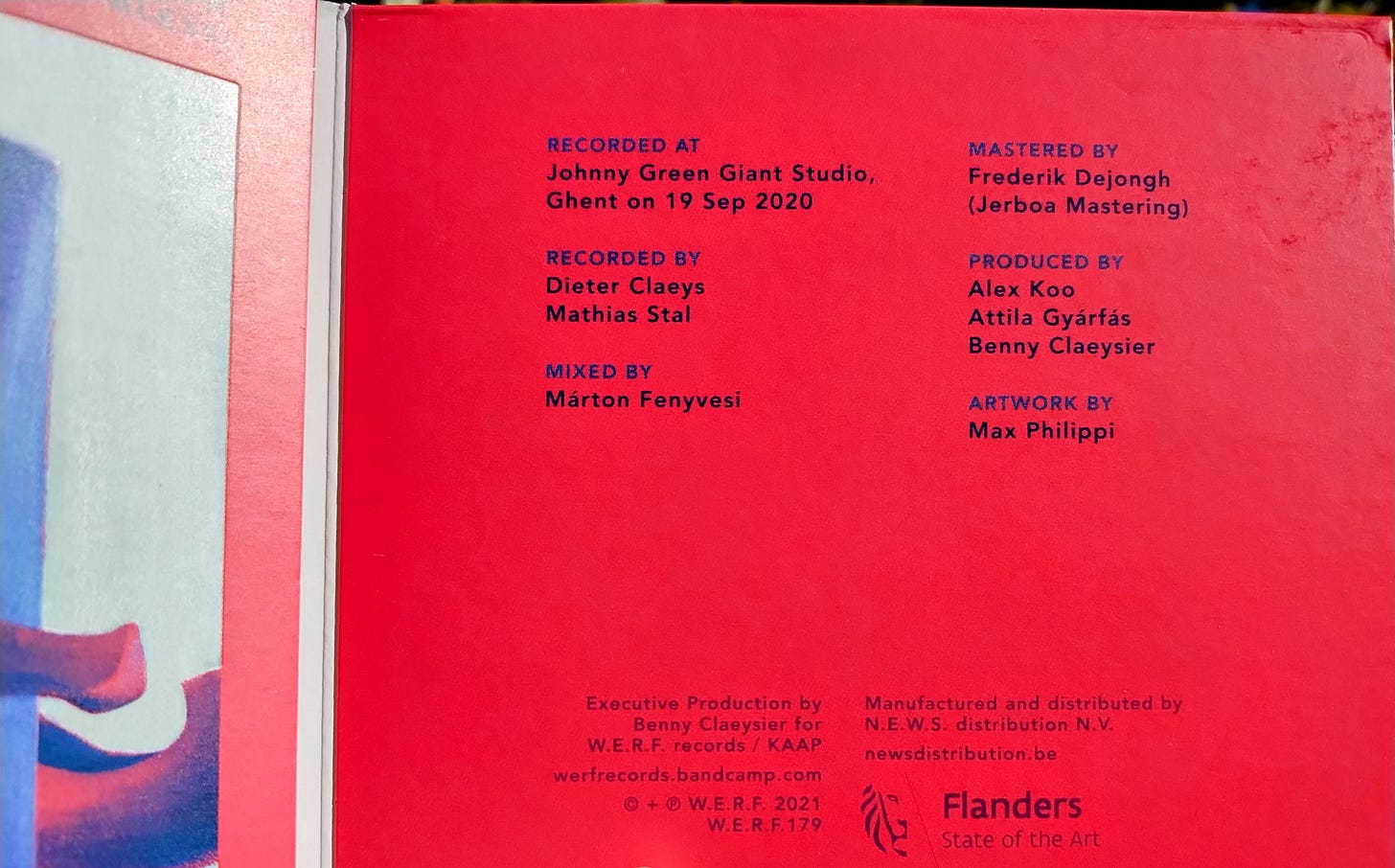The album begins with “Nebula,” where piano and trumpet, then some sparse percussion, set a tentative rhythm that builds with piano and drums taking a more definite stance, and Alessi’s trumpet wandering above the landscape of cymbals and piano chords in a lower register. Alessi is a trumpeter whose style is hard to miss. I jumped into his works with a recent album, and I’ve been listening to earlier works to enjoy any development in style I can detect. On this album, pianist Alex Koo has improvisations that are similarly atonal to Alessi’s. The two trade off and meld their melodies.
“Levitate!” is slower, ponderous. It is slow motion improvisation with some fluttering upward runs by Alessi. Koo’s piano is playing half notes, single notes, while Gyárfás’ drums are similarly slow and spare. I would love to use the joke from Douglas Adams’ novel, The Hitchhikers’ Guide to the Galaxy, and say the song hangs in the air the way bricks don’t (the way the Vogon construction fleet’s ships were described as doing), but I’ll let that go. Plus, the song seems to illustrate the process of beginning to levitate. It begins slow and almost motionless, with barely any stirring. It grows, with Alessi fluttering rapidly and occasionally holding a high note. Alessi plays tacet and Koo takes the turn to speed up the piano, which then slows down again, and Alessi rejoins. Gyárfás’ drums are barely there, adding just enough percussion to provide some semblance of drum-driven rhythm. Gyárfás also plays with cymbals. I love the distance jazz drummers can get out of just a few cymbals. The levitation happened, and what had levitated was laid back down.
“Ready, Set, Go” has Gyárfás exercising a great deal more activity on the drum set, verging on breakbeat sometimes. Fast, short runs are the rule for trumpet and piano, while drums are a constant churning that reminds me, though is not the same as, Coltrane-era drummer and collaborator Rashied Ali’s walls of sound. This is managed chaos, the continuance of 1960s free jazz. Almost as quickly as it began, the track was over. Drums and piano played what seemed to be a planned call-and-response pattern at the track’s end.
“Aurora,” the second astronomical-themed track on the album, has some ethereal keyboard work or electronic synth that opens the track. Alessi’s flurry is faint, and Gyárfás’ percussion is minimal, with no cymbals at the outset. The synth work has a bells-like quality, while Alessi brushes up against the melody in “Reveille.” Piano enters late, with a wow-wow-muted trumpet (a la the famous tones of Miles Davis) quietly contemplating the shifting curtains of light suggested by the synth, in “Aurora.” Gyárfás’ percussion is barely there and omnipresent, both at the same time. Even when silent, it is present-as-absence.
And I’m not going to go all the way through the album. I leave that to you, using whatever method you prefer at any given moment, for listening to music. I like Alessi. He is not for everyone at every time. For almost my entire life, I would have turned Alessi off immediately. My personal taste and interests in music have changed over the years. I am sure yours have and will continue to do so. Stagnation in music listening is something I regard as unfortunate. When I hear that someone hasn’t bought a new album in “20 years,” I want to encourage that person to try buying new music, even if that new music was recorded in 1949, as Miles Davis’ Birth of the Cool was (I think).
Enjoy Alessi if you choose, and happy listening as always!







